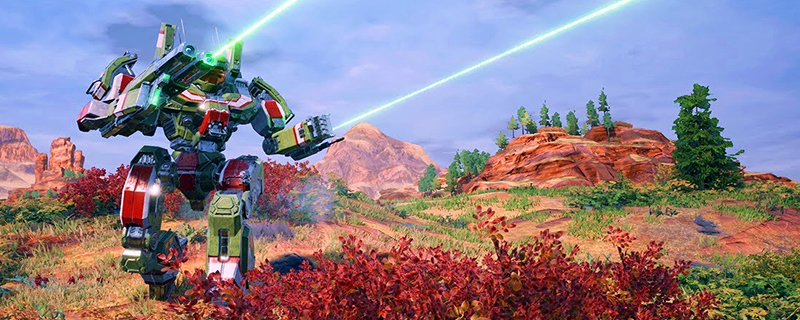Did Nvidia fix DLSS? DLSS 2.0 Analysis with MechWarrior 5: Mercenaries
DLSS 2.0 in MechWarrior 5: Mercenaries – Image Quality
As mentioned on the previous page, Nvidia’s DLSS 2.0 mode has three quality modes, Performance, Balanced and Quality, each of which uses a different scaling factor to generate the final output of Nvidia’s DLSS algorithm.Â
With lower resolution inputs, Nvidia needs to use its AI Algorithm to generate more data, but using a lower resolution input allows Nvidia graphics cards to generate higher framerates. This factor creates a performance/quality balancing act for DLSS users.Â
The question now is whether or not DLSS generates images that are comparable to native resolution renderings. If they are, Nvidia’s DLSS 2.0 will give Geforce RTX users what’s effectively a free performance upgrade. If not, DLSS’s increased performance will come at the cost of decreased graphical fidelity, which may not be a worthy trade-off for some gamers.
DLSS Performance Setting
Starting off with DLSS 2.0’s Performance setting, we can immediately see that DLSS can have a positive impact on MechWarrior 5’s visuals. The image is much sharper, making DLSS’ increased framerates all the more astounding.Â
We will note that some areas of the DLSS-enhanced screenshot below are a little grainy, we cannot deny that DLSS 2.0 provides gamers with a sharper image. In all, DLSS 2.0 in this scene makes MechWarrior 5 run faster and look better.Â
Â
DLSS Balanced Setting
When we set DLSS to Balanced, we can see that some of the artefacts of DLSS’ performance setting are lessened, granting the same performance benefits as before, but with fewer downsides.Â
While Nvidia’s reconstruction isn’t perfect, the limited downsides of DLSS 2.0 are impossible to notice outside of a side-by-side comparison. In MechWarrior 5, DLSS 2.0 is, in a practical sense, a free performance upgrade for Nvidia’s RTX series graphics cards. Yes, there are downsides, but you need to be looking for them. Beyond that, setting DLSS to Balanced or Quality will severely lessen these minor graphical downsides. Â
DLSS Quality Setting
Much like the move to Balanced, turning DLSS to its Quality mode results in some further increases to MechWarrior 5’s graphical fidelity. All of the graininess of DLSS’s performance mode is gone, leaving us with a sharper image and higher framerates than when DLSS is disabled.Â
  Â
Other Image Comparisons
All of the images on this page are 800×450 segments of 4K screen captures, with the below selection comparing Native 4K images with DLSS enabled equivalents in DLSS Performance mode.Â
The below comparison should highlight how similar MechWarrior 5 can look with DLSS enabled and disabled, even with its most performance-friendly setting. Without side-by-side comparisons, the differences between DLSS on and off can be almost impossible to spot in some scenes, especially so with DLSS’ balanced and quality modes.Â
One factor with DLSS is that it sometimes causes images to look different, resulting in some differences in colouration or minor differences in scene contrast. Overall, the image with DLSS enabled appears to be slightly sharper, but overall, the difference in image detail is minor.Â
Below we have an instance where some of DLSS’ downsides shine through, but overall, DLSS improves the image quality of MechWarrior 5. The image with DLSS is sharper, but when looking at the shadows of distant trees, we can see some grainy details emerge.Â
These grainy shadow edges are diminished when DLSS is set to Balance or Quality, but it does highlight that DLSS is far from perfect. That said, given the performance boost offered and the setting’s increased sharpness in other areas of the image, this minor downside is undoubtedly worth it, at least in our eyes. Â
 Â



